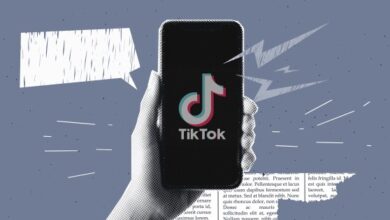How American Brands Can Keep Up with the Live Commerce Gold Rush

Live shopping And video commerce are booming, driven by growing consumer interest and the success of global disruptors like Shein and Temu.
These international players dominate their markets with highly engaging and frictionless shopping experiences and have expanded aggressively in the United States, raising the stakes for domestic brands. This development parallels the introduction of TikTok in the United States, where major global brands were slow to recognize the platform’s potential until it became too big to ignore. (And in fact, we saw livestream shopping sales on the platform increase 40% year-over-year from January to November 2024.) Livestream shopping could follow a similar trajectory if U.S. retailers do not act quickly.
Recent consumer survey The data highlights the urgency for action. Over the past year, nearly half (45%) of U.S. consumers participated in live shopping events on platforms like Amazon Live Or Poshmark’s Chic shows. Meanwhile, 61% viewed or purchased through social video channels such as TikTok Shop, Instagram Reels, Facebook Live and YouTube. Just this last Black Friday, TikTok Store achieved over $100 million in sales in a single day and enabled buyers to participate in over 30,000 live sales sessions.
Even with TikTok facing a potential ban in the United States In the new year, brands and retailers cannot afford to ignore the astronomical growth of this shopping format. By 2025, social media platforms will be even more ingrained in the shopping experience. Instagram, TikTok and YouTube will offer increasingly sophisticated live shopping features, blending entertainment and e-commerce.
From static screens to dynamic flows
Live shopping is about more than just product presentation: it’s about creating memorable, interactive experiences. Rooted in the heritage of QVC and HSN, the format has moved into the digital age, where platforms drive engagement through real-time interaction and seamless shopping. Today’s version offers personalization and immediacy, replacing TV screens with smartphones, 800 numbers for “Click Here” buttons, and scripted pitches for more spontaneous and dynamic storytelling.
The appeal of live shopping is growing across all sectors, breaking away from its traditional association with fashion and beauty. Men, often overlooked in video commerce, are participating at higher than expected rates.48%, compared to 42% for women. In fact, 31% of men consider discovering new products to be the most valuable aspect of online shopping. This opens the door for more electronics, gaming and sporting goods brands to engage customers in ways that build product knowledge and emotional connection. These experiences bring a level of authenticity that static product pages can’t replicate, making live shopping an invaluable tool for creating dynamic engagement across all industries.
Holiday Shopping and promotional events like Black Friday are natural opportunities to amplify a live shopping session. 38% of consumers say they don’t know if their favorite brands offer video commerce or live shopping, highlighting an awareness gap that brands need to fill. Brand anniversaries and product milestones offer similar potential, wrapping commerce in nostalgia or exclusivity, tapping into consumer emotions while presenting products in a new and exciting light.
To successfully leverage this trend during the holiday season and into the new year, brands should explore the following strategies.
Gamification
Shein and Temu demonstrate how gamification (and FOMO) during live shopping events can boost engagement and loyalty. These platforms use interactive features such as spin-to-win promotions, blowout sales exclusive to live sessions, rewards and challenges that create urgency and exclusivity. By offering limited-time offers or discounts during live events, they maintain high consumer attention, ensuring repeat visits. This strategy not only helps brands differentiate themselves, but also promotes long-term loyalty.
Leveraging AI
When considering a live shopping platform, it’s worth considering technology and platform integrations that can automate key processes and maintain a personal touch. AI-powered chat features can provide instant assistance, quickly answer frequently asked questions, and offer personalized recommendations.
WhatsAppwhich is already widely used worldwide for targeted customer messages, can be a game changer in terms of continued engagement after live shopping events or abandoned cart recovery. These strategies allow businesses to focus on targeting specific customer profiles and achieving their conversion goals while minimizing the need for post-event follow-up queries and costly infrastructure investments.
Building consumer trust with influencers
By leveraging trusted voices with strong audience connections, brands can drive meaningful engagement in live shopping. The right influencer can build credibility by fostering real-time interactions that outperform traditional ads. Their product demonstrations, personalized content and Q&A sessions simplify purchasing decisions, while microinfluencers excel at connecting with niche communities, combining expertise and relatability. This fosters deeper relationships and gives consumers the information they need to make confident and informed purchases.
A permanent change in e-commerce
Livestream shopping is not just a trend; it’s a transformative change in consumer behavior. Today’s buyers crave authentic, unscripted experiences, much like long, raw interviews with a Joe Rogan Podcast– where authentic, real-time interactions take center stage. Livestream shopping and video commerce have proven particularly lucrative for brands offering exclusive, invite-only or digital personal shopper experiences. This resonates across both the B2C and B2B sectors, as the lines between these segments of commerce continue to blur.
American brands can capitalize on the growing demand for so-called “concierge commerce,” providing a personalized experience that allows them to respond directly to audience needs. Through these dynamic interactions, brands create deeper connections with their customers, generating long-term value and refining their strategies based on real-time insights.





